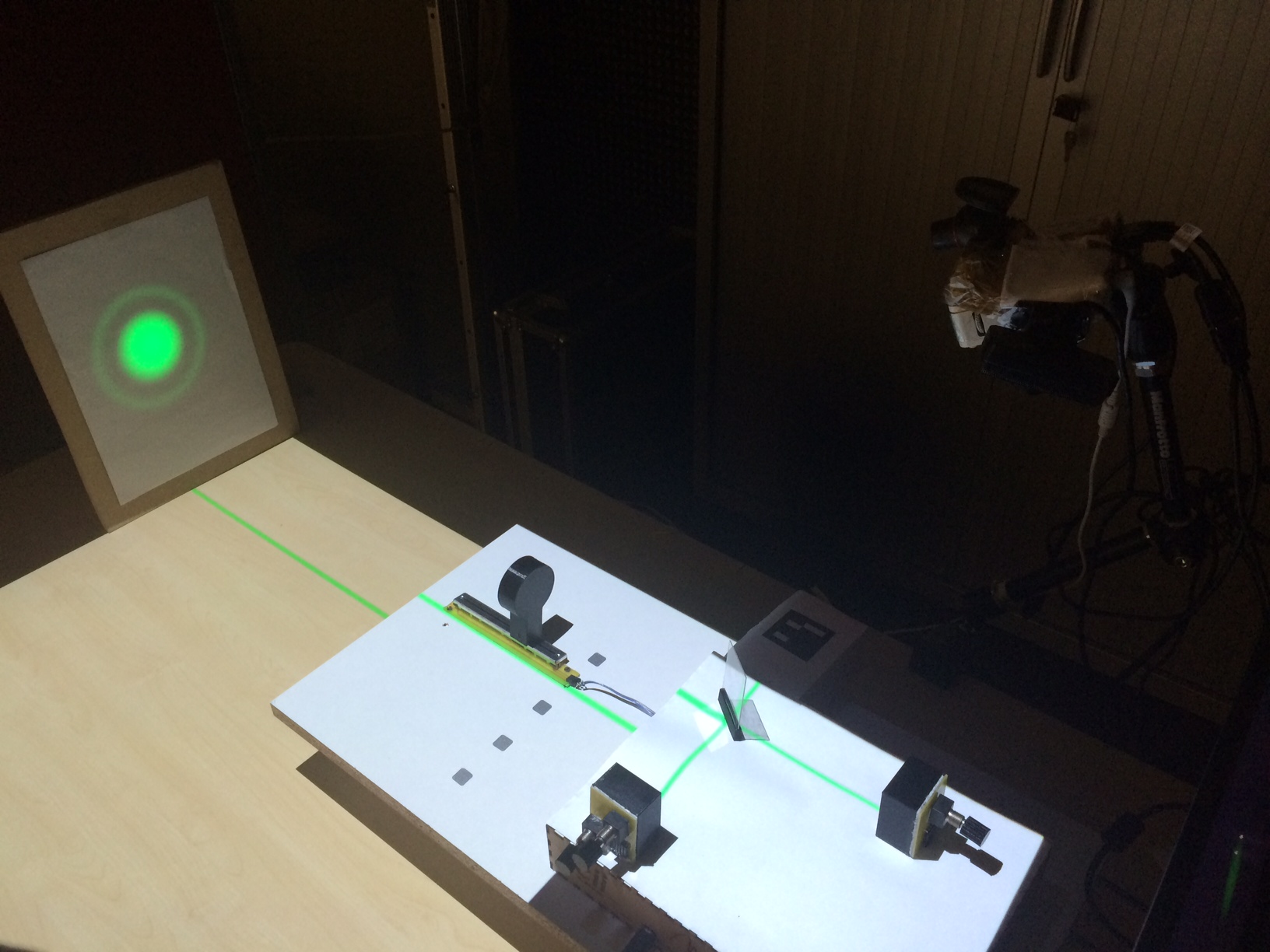Section: New Results
HOBIT - Hybrid Optical Bench for Innovative Teaching
Participants : David Furio, Benoit Coulais, Martin Hachet.
Experiments in optics are essential for learning and understanding physical phenomena. The problem with these experiments is that they are generally time consuming for both their construction and their maintenance, potentially dangerous through the use of laser sources, and often expensive due to high technology optical components. We propose to simulate such experiments by using hybrid systems that exploit both spatial augmented reality and tangible interaction (See Figure 8 ). In particular, we focus on one of the most popular optical experiments: Michelson interferometer. In our approach, we target a highly interactive system where students are able to interact in real time with the Augmented Michelson Interferometer (AMI) to observe, test hypotheses and then to enhance their comprehension. Compared to a fully digital simulation, we are investigating an approach that benefits from both physical and virtual elements, and where the students experiment by manipulating 3D-printed physical replicas of optical components (e.g. lenses and mirrors). Our objective is twofold. First, we want to ensure that the students will learn with our simulator the same concepts and skills that they learn with traditional methods. Second, we hypothesis that such a system opens new opportunities to teach optics in a way that was not possible before, by manipulating concepts beyond the limits of observable physical phenomena. To reach this goal, we have built a complementary team composed of experts in the field of optics, human-computer interaction, computer graphics, sensors and actuators, and education science. HOBIT is a joint project between Inria and Université de Bordeaux (Idex CPU – LAPHIA), in collaboration with Université de Lorraine (team PErSEUs). [28]



